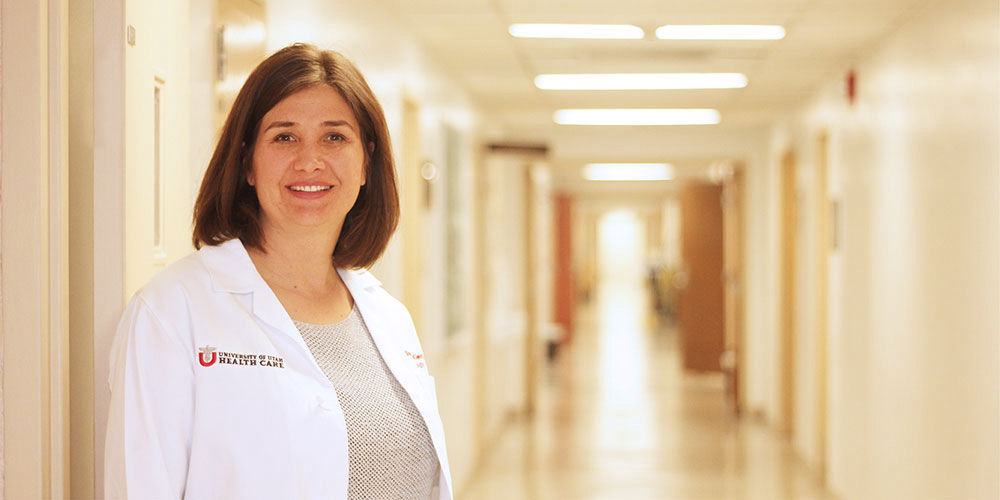Learning By Doing
2014, Stephanie Klein and Utah’s Department of Dermatology took a risk. They decided to open a clinic for urgent skin care needs—a new rash, blisters, skin pain—conditions that would typically send a patient to an urgent care center or the emergency department. Before the same-day dermatology clinic opened, patients would find themselves with a weeks-long wait to see a dermatologist or perhaps an incorrect diagnosis. Klein said, “We know that non-dermatologists have about a 50% chance of getting the diagnosis correct for a dermatologic condition.” Opening the same-day dermatology clinic meant that patients with an acute skin issue would get the right diagnosis from the right provider—a board-certified dermatologist.
While the immediate demand for the clinic’s service was exciting, Klein faced many hurdles to success. Leading change requires physicians to move beyond excellent diagnostic skills and efficient daily work, and embrace the hard work of building effective teams. Here are some of Klein’s lessons.
#1 Improvement is energizing
Building same-day dermatology gave me the opportunity to be creative. I was happy in my regular clinic practice, but thinking about improving health care really energized me. When I got to take the Value Improvement Leaders class, I loved it. I loved thinking about my mission and the potential financial impact of an urgent access clinic. I have an undergraduate degree in economics. I really loved the creative component of building something new and working on it.
#2 Sharing Your Vision Is Key
I always thought the key to being successful in my clinic was showing up and achieving the best outcome by getting the right diagnosis. I’ve always felt that my job meant working hard. But leadership is not the same. I thought opening the clinic it was just a combination of logistics—get the appointments, get the staff, get the doctors, get the rooms, and just push it all together and you have a clinic. But it isn’t that simple.
I received tough feedback from my colleagues, the staff, the residents, and worst of all—the patients. My coach in Value Improvement Leaders, Dr. Frank Thomas, told me I need to get people on board with the idea of same-day dermatology. I realized that I had to articulate what I wanted and why this was important. But it was so hard. Sharing your vision sounds like such a simple concept, but it’s really hard in practice.
Sharing my vision has made my team so much more functional. They don’t want to move around because they know that I care about them, and that they are part of delivering this important care. Just “doing a job” can feel empty. Our real work is impacting lives and improving care.
#3: How you share your vision matters (Hint: storytelling creates shared purpose)
For a while, I would say, "Same Day Dermatology is providing immediate care to the sickest patients by the people who are most trained to be able to provide it." Now I tell stories about the kind of care we deliver. For example:
“A homeless patient with schizophrenia was frequently admitted to the University Neuropsychiatric Institute (UNI). When he stayed at UNI, he experienced intense itching, which was thought to be scabies. The UNI staff sequestered him so we wasn’t contagious to others. The patient couldn’t participate in meals or attend therapy sessions. UNI sent him over to the same-day dermatology clinic, and it turns out this patient didn’t have scabies or something infectious. It turned out he had dermatitis herpetiformis, which is an autoimmune skin manifestation of celiac disease, with lifelong manifestations. Once we treated him, he was able to heal.”
I tell people that we would have never caught this patient without same-day dermatology, and that this service is how we are improving health care delivery for individual patients.
#4 You have To build relationships to build a team
I never had to share a vision with a team. I never had to be compelling before. Medical school just teaches you to work in a hierarchy, and you’re always on the low-end of that hierarchy, until all of sudden, you’re not. It doesn’t work if you just tell people “I’m starting this new clinic because I want to.” But the idea that we are serving under-served populations, that we are improving quality for patients by getting them the correct care when they need it—that resonated with people.
After people shared their negative feedback, I realized I had to build relationships to build a team. For about seven or eight months, I walked around with a notebook, and when someone said something negative about same-day dermatology, I would ask them, “Ok, what exactly are you worried about?” I would write down their thoughts, and I would really listen and learn. People could see that I really wanted to know their ideas. Once they started feeling heard, and could see their ideas at work, we starting becoming an effective team.
Stephanie Klein
If in previous dojo posts, you still haven’t found what you’re looking for, today’s post will satisfy your desire. In it we describe the mysterious ways of Drs. Chris Hull’s and Mark Eliason’s clinic practice. Unless you’re a patient, you can’t witness their clinic, but this post is even better than the real thing.
University of Utah Health’s director of patient experience Mari Ransco examines the pandemic patient experience through the lens of the 5 Elements: U of U Health’s qualitative model for delivering an exceptional patient experience.
Improvement isn’t just for one area of academic medicine. The right improvement can mean improved patient and trainee experience, reduced cost and a more engaged staff. Nurse Manager Bernice Tenort, physician Brett Einerson, and an interdisciplinary team ended up solving many challenges by tackling a long-standing problem: wait time in labor and delivery.
